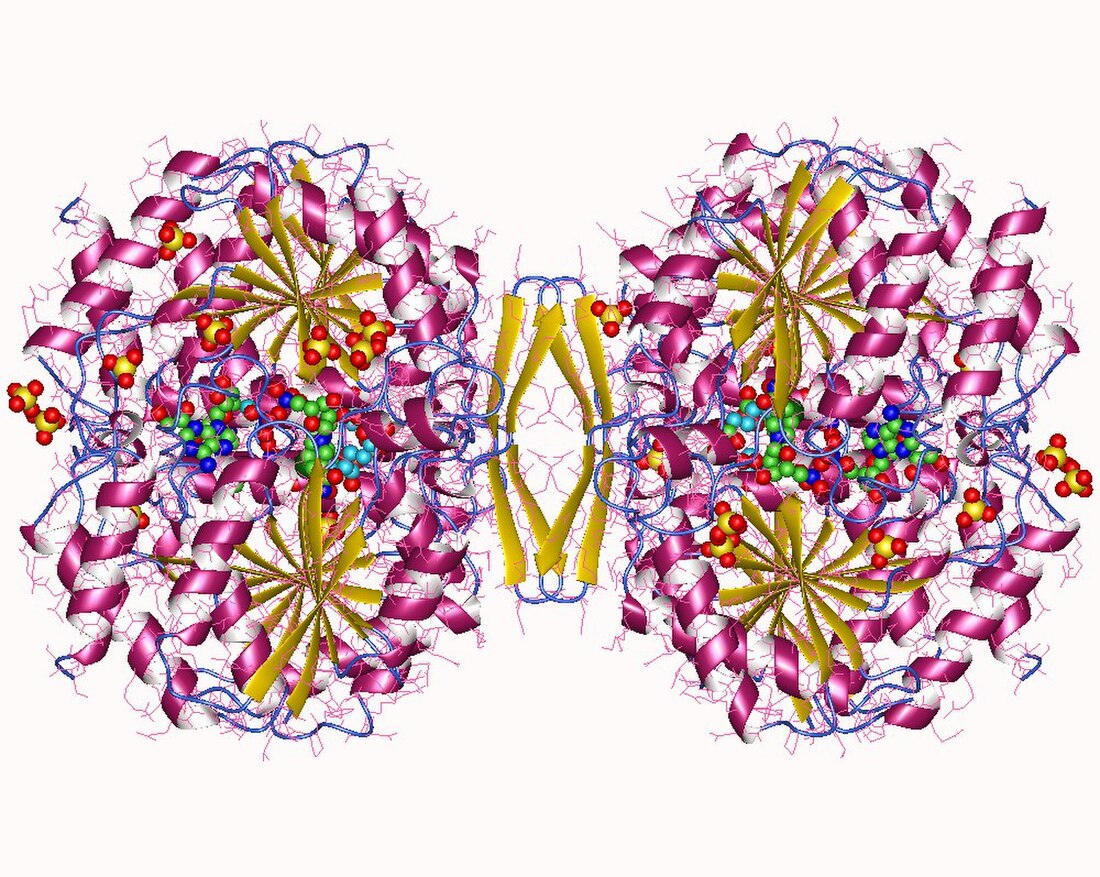Top Qs
Timeline
Chat
Perspective
Homoisocitrate dehydrogenase
Enzyme From Wikipedia, the free encyclopedia
Remove ads
In enzymology, a homoisocitrate dehydrogenase (EC 1.1.1.87) is an enzyme that catalyzes the chemical reaction
- (1R,2S)-1-hydroxybutane-1,2,4-tricarboxylate + NAD+ 2-oxoadipate + CO2 + NADH + H+
Thus, the two substrates of this enzyme are (1R,2S)-1-hydroxybutane-1,2,4-tricarboxylate and NAD+, whereas its 4 products are 2-oxoadipate, CO2, NADH, and H+.
This enzyme belongs to the family of oxidoreductases, specifically those acting on the CH-OH group of donor with NAD+ or NADP+ as acceptor. The systematic name of this enzyme class is (1R,2S)-1-hydroxybutane-1,2,4-tricarboxylate:NAD+ oxidoreductase (decarboxylating). Other names in common use include 2-hydroxy-3-carboxyadipate dehydrogenase, 3-carboxy-2-hydroxyadipate dehydrogenase, homoisocitric dehydrogenase, (−)-1-hydroxy-1,2,4-butanetricarboxylate:NAD+ oxidoreductase, (decarboxylating), 3-carboxy-2-hydroxyadipate:NAD+ oxidoreductase (decarboxylating), and HICDH. This enzyme participates in lysine biosynthesis.
Remove ads
Structural studies
As of late 2007, only one structure has been solved for this class of enzymes, with the PDB accession code 1X0L.
References
Wikiwand - on
Seamless Wikipedia browsing. On steroids.
Remove ads


